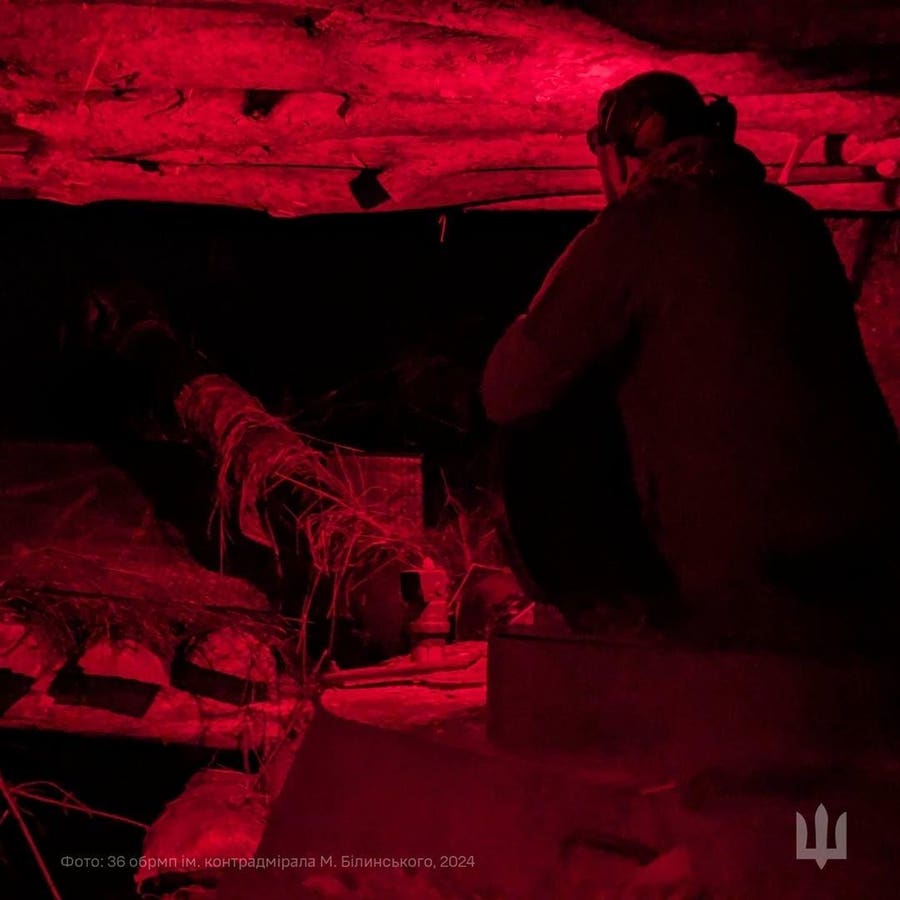A 2S1 crew underground.
36th Marine Brigade photo
The threat from tiny explosive drones, thousands of which prowl both sides of the front line of Russia’s 39-month wider war on Ukraine every day, is driving armored vehicles and their crews underground.
A video that circulated online recently depicts the muddy hovel of a Ukrainian artillery crew somewhere along the 700-mile front line. The four-person crew and its 18-ton, tracked 2S1 howitzer—a 122-millimeter gun in a turret on a lightly-armored chassis—live tens of feet underground in a dugout clearly carved out of the soil by heavy engineering equipment.
Logs cover the dugout. A thick net meant to catch Russian attack drones serves as the “door.” The underground position is so deep that the 2S1 struggles to climb out of it for a fire mission.
Official photos from the Ukrainian 36th Marine Brigade, which defends a sector along Ukraine’s northern border opposite Russia’s Kursk Oblast, depict the same dugout—or a similar one, perhaps indicating more Ukrainian artillery batteries are going to ground.
It’s not for no reason. Ukrainian forces deploy around 2 million explosives-laden first-person-view drones every month; Russian forces deploy a similar number of FPVs, which weigh just a few pounds and pack enough explosives to damage a vehicle and kill a person. The FPVs can be controlled out to a distance of several miles by wireless radio or unspooling fiber-optic cable.
“The sky above the Ukrainian positions is a constant battleground of its own,” David Kirichenko explained in a September essay for the Washington, D.C. Center for European Policy Analysis. “Enemy and friendly drones crisscross the airspace, hunting for valuable targets like heavy armor and artillery. This aerial cat-and-mouse game has fundamentally altered tank tactics.” Artillery tactics, too.
A 2S1 emerges from its bunker.
Via Roy
Buried for safety
More and more, heavy vehicles hide when they’re not actively firing at the enemy. It’s a new “era of the cautious tank,” according to Kirichenko. And it’s been getting worse by the month for the vehicle crews. “We could say that it has even gotten more cautious now,” Kirichenko said eight months after publishing his essay.
No FPVs are foolproof, however: the wireless models can be jammed, the fiber-optic models leave a telltale trail of fiber that can lead enemy forces back to their operators. And all the drones can be blocked by armor, mesh or netting—or by simply closing the door to any structure a vehicle and its crew might be sheltering in.
Dirt offers excellent protection, so don’t be shocked to see more vehicle crews evolve into subterranean creatures as the war grinds on and more drones patrol the front line.
If there’s a limitation on how many vehicles can head underground—and how quickly—it’s the engineering equipment that’s necessary to dig the hideouts. It’s not for no reason that more than a few Ukrainian units have been raising funds for excavators.
Read the full article here


